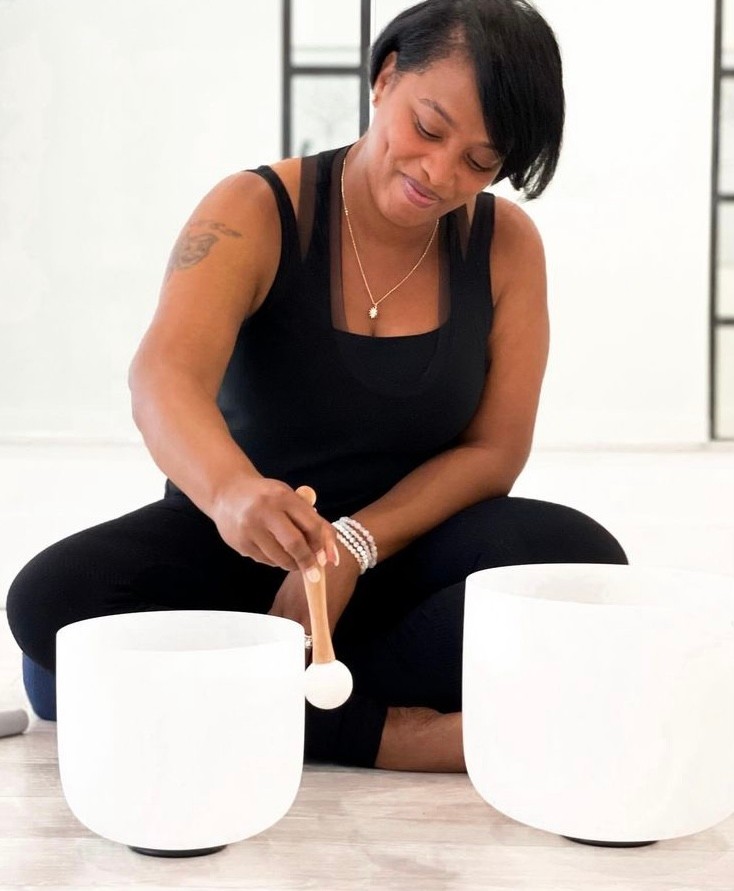We caught up with the brilliant and insightful Lakeisha Gatling, PhD, LCSW, 200 RYT a few weeks ago and have shared our conversation below.
Lakeisha, thanks for joining us, excited to have you contributing your stories and insights. We’d love to hear about how you went about setting up your own practice and if you have any advice for professionals who might be considering starting their own?
Since I was a young girl, people seemed to always come to me to share their stories, and even to ask for advice. It wasn’t until I got older that I realized I had a special gift; several gifts actually, which were being a good listener, sharing kind and calming words, having compassion, and having a passion for service to others. I did not think that I would be a psychotherapist though. However, after seeking my own counseling in my early adult years, I shared with my therapist who was also Social Worker, that I was interested in becoming a Social Worker to help people in the way in which she had helped me. At the time, I was already a working adult and didn’t know where to begin. My therapist encouraged me and shared some of the ways in which I could begin. With her support, the support of my husband and my sister-in-law, I started going to college, to begin the path to becoming a Social Worker. Because I was a working adult, my quest, for education to become a Social Worker came with long nights, and weekends filled with studying and writing papers.
I attended school for 15 years consecutively and achieved an Associate’s degree, a Bachelor’s degree, a Master’s degree, and finally a Doctoral degree. After completing my master’s degree, I was able to take the exam to become a Licensed Master Social Worker, which begin the start of my practice. I didn’t know how to start a private practice much less wasn’t so certain that I could do it. Much of the challenge that came with starting a practice was learning how to put fear aside. My passion for helping people, especially women of color always kept me grounded when fear tried to get the best of me.
I also had to keep in mind that I was creating and doing something that I didn’t have a blueprint for. Therefore, I gave myself permission to “got out into the deep” and create my own way. Creating my own way looked like being willing to make mistakes, and allowing myself to be vulnerable at times to ask for help on how to start a practice. It also looked like granting myself access to education so that I could be accessible to the women who I wanted to serve.
I would not change one thing about the trials and the victories that have come with me being in private practice for six years now.
If you are considering starting a private psychotherapy practice, the best advice that I could give is to first believe that you can do it, the second is to seek out support and the third is to give yourself the grace to learn and grow because there’s no possible way that you can know it all in the beginning, middle, or end.

Great, appreciate you sharing that with us. Before we ask you to share more of your insights, can you take a moment to introduce yourself and how you got to where you are today to our readers
I am the owner and founder of LDGatling Counseling and Consulting, PLLC which offers individual therapy services to women of color, specifically African American women and those who are in the mental health profession, executive leadership, and entrepreneurs.I specialize in trauma-informed culturally sensitive therapy, anxiety, depression, self-esteem, self-love, and relationship issues.
I am also the owner and founder of The Nourish Haven, LLC which offers wellness services that include restorative yoga, self care coaching, and wellness education and retreats.
Both companies encompass a mind, body, and spirit approach to mental wellness and help women create the life that they want to live by way of self-care, boundary setting, and addressing unresolved trauma and childhood issues, anxiety, depression, and self-esteem/worth issues.
I am most proud of helping to reduce the stigma within the African-American community regarding seeking therapy/mental health services. I became the face that I and others in my community needed to see.
I got to where I am today by doing my own work which means, creating my own healing journey, being unapologetic about asking for help and support, working through my own struggles with trauma, fear and self-confidence, while allowing vulnerability to take place in my life and share things that were and may attempt to hold me back from being my most authentic and best self.
If you could go back, would you choose the same profession, specialty, etc.?
If I could go back, I would absolutely choose the same profession. To witness and support women of color in their personal growth and healing journey is inspiring, amazing, and empowering to know that I get to provide a safe, soft space for women of color to heal and create and live the life that they deserve.
We’d love to hear a story of resilience from your journey.
Obtaining my college education was not an easy feat. I come from a family of working-class people. In addition, my mother has worked through intellectual disabilities for the majority of her life, and my father left the school system when he was about 14 years of age. My father also struggled with addiction and a life of being in and out of prison. I also had a younger sibling who was born physically disabled and needed full-time assistance with his everyday living. Unfortunately, my brother died during my first year of graduate school and my father died during my second year in doctoral school.
During those times, I often wondered if I should continue the process of my education because grief definitely got in the way. While I very much wanted to quit, I was still convinced that my purpose was to help others find their path to healing. I just couldn’t quit. Grief can be a beautifully ugly process. It allowed me to light a path in the midst of dark times and create a life that I felt I was purposed to live.
Contact Info:
- Website: ldgatling.com
- Instagram: @dr.lgatling
Image Credits
Ken Jones (blue top) Erin Cummings (sound bowls)


